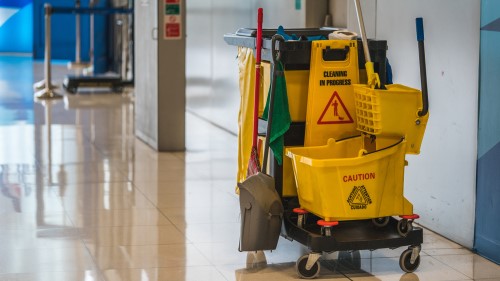
As many schools shut down due to the pandemic and holiday break, now is a good time to pull out your preventative maintenance checklists and perform some much-needed inspections and much-neglected housekeeping. With buildings being unoccupied and school vehicles being unused for extended periods of time, preventive maintenance checklists can aid in averting possible costly damage now and in the near future as operations ramp up again. The following are examples of some of these items:
Fleet Storage
- If you have vehicles with diesel engines, be sure that they are plugged into AC to assure the engine blocks remain warm during cold weather.
- Check and make sure circuits in wet areas such as garages and exterior areas are protected with ground fault circuit interrupter (GFCI) technology.
- Assure that your fleet has the proper winter diesel mixture required to prevent “gelling” from occurring.
- Check fluids to assure they are at proper levels.
- Batteries should be checked periodically to assure they are maintaining a proper charge.
- Tires should be inspected, and pressure checked.
- Make sure fleets are secure from vandalism and protected from storm damage.
Lighting Maintenance
- Inspect lighting to assure adequate illumination. Lighting should be on a regular maintenance schedule and replaced at 70-80% of the rated life expectancy. The date of installation should be maintained on the maintenance checklist and verified during the inspection. Properly dispose of used lamps as Universal waste via a reputable waste vendor.
- Perform all required local emergency lighting tests and document. Replace damaged units as necessary.
Parking Lots and Walkways
- Freezing can cause sidewalks to heave, so they should be inspected for areas where the elevation change has a difference of just over 1/8”. If problems are found, repairs should be made to eliminate tripping hazards. Rent a scarifier to grind down uneven walking surfaces.
- Parking lots should be inspected for proper lighting and drainage to assure that water doesn’t accumulate in areas that could freeze and cause slip hazards.
- Curbs and other tripping hazards should be staked, with high visibility snow stakes, so that they are observable after a substantial snowfall.
Roofs
- Inspect for damage and repair any known leaks as evidenced by ceiling tiles or water marks.
- Clear all roof drains
- Make sure high wind structural elements are in good condition where installed.
Building Inspections
- Now is a good time to go through storage closets and other storage areas to remove any unused books and other unused items.
- Check boiler rooms to assure that they aren’t being used as storage areas and remove items that are improperly being stored there.
- Check heating systems and portable heaters to make sure there is adequate space around them and combustible items are not stored too close.
- Conduct a chemical inventory and verify Safety Data Sheets are available for hazardous chemicals.
- Check chemistry labs and chemical storage areas and dispose of expired chemicals via a reputable waste vendor.
- With recommendations being made to open windows and doors, even during cold weather to reduce the risk of Covid-19, it is important to audit to assure that all windows are closed when buildings are not occupied. Open windows could cause the potential of losses due to freezing fire suppression sprinkler and domestic water pipes.
- Be sure that hallways aren’t blocked and being used as areas to store chairs and desks. Due to social distancing, many desks and chairs need to be removed from classrooms and should be stored properly to prevent the blocking of hallways, exits, fire extinguishers, and hoses, etc. (see the previous point about freeing up storage by removing unused items that tend to build up over the years.)
- As snow melts, check for areas of pooled water that may indicate clogged outside drains or improper drainage areas that may need repair. Make sure drains are not tripping exposures and repair as necessary.
Safety Signage
- Safety signage should be inspected and replaced if faded or illegible.
- Emergency shut-off valves should be labeled and if at ground level, high visibility snow stakes should be installed so they can be located when there is snow accumulation.
- Critical infrastructure located in close proximity to roadways should be marked with high visibility snow stakes to prevent unintended contact.
- Make sure playground signage notifying users of age appropriateness, hours of operation, and rules is present, and If not, now is a good time to order new signage.
If used properly, maintenance and safety checklists can be an invaluable tool in the prevention of substantial financial losses.
To download the PDF version of this article, click here.
